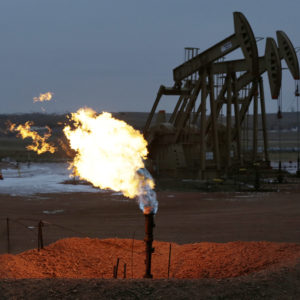Over the course of the last decade, the U.S. has been cooking with gas. Even more than that, it is using natural gas to heat homes, generate electricity, and make plastic at ever-increasing rates. The shift from coal to natural gas as fuel for electricity generation in particular was lauded by many environmentalists looking for market-based solutions to reduce carbon emissions. Although natural gas releases less carbon dioxide, sulfur dioxide, and airborne particulates than coal, it is a fossil fuel. Eventually, the increased use of natural gas will have diminishing marginal returns on air quality. The potential environmental impacts of growth in the natural gas sector are the focus of a new report by the International Energy Agency (IEA), which urges producers to adopt emission reduction technology.
“Even if natural gas is better than coal, this comparison sets the bar too low. The environmental case for gas does not depend on beating the emissions performance of the most carbon-intensive fuel, but in ensuring that its emission intensity is as low as practicable,” write Tim Gould, head of the World Energy Organization (WEO) Energy Supply Outlook Division, and Christophe McGlade, WEO senior analyst.
The report looks at natural gas as a transition fuel. While modern natural gas power plants release less than half as much carbon dioxide as coal-fired plants, they do emit other greenhouse gases.
Of particular concern is methane, a potent greenhouse gas that is often released into the atmosphere when drilling and transporting. Today’s natural gas industry has resisted emission reduction measures. With natural gas prices at near record lows, many drillers had found it easier to vent into the air or set on fire methane deposits found alongside crude oil and which were deemed not worth the cost of recovery. This process was largely unregulated until this summer, when Congress approved regulations limiting the practice.
The practice is concerning for environmentalists because at present no documentation exists of the extent of the practice. The study estimates that globally, about 1.7 percent of natural gas production is lost to the atmosphere before reaching consumers.
“There is very little dispute about the emissions associated with natural gas combustion. However, there is much less consensus over the level of direct methane emissions that can occur – whether by accident or by design – on the path from oil or gas production to final consumer,” write Gould and McGlade. “This is a critical issue for the long-term natural gas outlook: methane is a potent greenhouse gas and the uncertainty over the level of methane emitted to the atmosphere raises questions about the extent of the climate benefits that gas can bring.”
In addition, natural gas leaks into the atmosphere at various steps along the production and transportation cycle. According to statistics from the U.S. Energy Information Association, these leaks were the source of about 32 percent of total U.S. methane emissions and about 4 percent of total U.S. greenhouse gas emissions in 2015. Scientists say that current atmospheric methane levels are about 2.5 times greater than pre-industrialization levels. In 2012, global methane emissions were estimated to be around 570 million tonnes (Mt), with about 60 percent of these emissions coming from anthropogenic sources.
“Methane traps much more heat than CO2 (per unit of mass) while in the atmosphere but stays there for a much shorter time,” the report said. “A tonne of methane is equivalent to between 84 and 87 tonnes of CO2 when considering its impact over a 20-year timeframe (GWP20) and between 28 and 36 tonnes over a 100-year timeframe (GWP100).”
The IEA believes that many of these emissions could be reduced with little to no net cost. Changes to technology that would prevent methane from escaping into the atmosphere during the production and transportation process are some of the first fixes on their list. These emission reduction changes would be easiest to implement in regions of the world like Africa and Asia, which are still developing their systems.
In the U.S., with natural gas prices so low, there is less incentive for producers to implement many of these changes. The report acknowledges that several factors have impeded emission reduction measures, including a lack of awareness, competition for limited development capital, and insufficiently quick payback timelines.
Still, policies like the methane rule that encourage companies to reduce loss and emissions in their production procedures could have a significant environmental impact.
“Implementing only the abatement measures that have positive net present values in the New Policies Scenario (the central scenario of the World Energy Outlook) would reduce the temperature rise in 2100 by 0.07 °C compared with the trajectory that has no explicit reductions. This may not sound like much, but it is immense in climate terms,” Gould and McGlade write.
This is equivalent in warming reduction to the carbon reduction that would be saved by immediately shutting all existing coal-fired power plants in China.
Given the expected growth of natural gas in the next 15 years, measures like this will likely come before regulators. The question is how to continue to improve, moving from lower carbon emissions towards as few emissions as possible. Doing so requires realistic statistics on the impact of natural gas.

